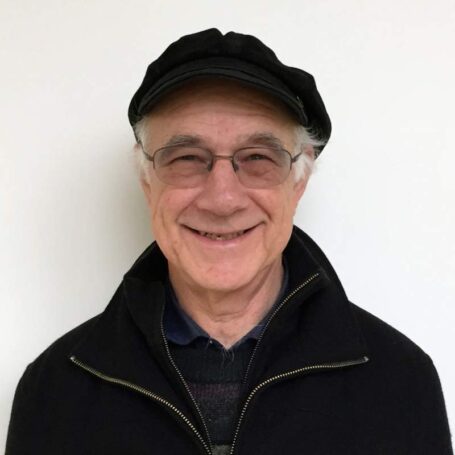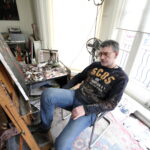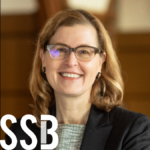Neoliberal Education and Its Discontents in South Korea
In many English-speaking places, ‘spec’ is an abbreviation of specification and applies only to things. In particular, ‘spec’ applies to consumer products. English speakers regularly ask for and compare the ‘specs’ of cars, phones, cameras, computers, and other electronics. In South Korea, however, people are also spoken of in terms of their ‘specs.’ In particular, employers ask for and compare job candidates’ specs. Spec is a Konglish, or hybrid Korean-English word, that abbreviates ‘specification.’ Korean youth spend considerable time and energy collecting these, which are the building blocks of their resumes or CVs. One university student recently told me that he does not follow the news regularly because he spends all his free time getting specs. Another student told me that specs have replaced concern for politics or international affairs. Still another student said that Korean politics are ‘too depressing’ and she does not expect much to come from it so it is more practical to focus on things she can control such as her own specs.
The most common specs are test scores, foreign languages, and computer software or programming competencies. People take courses, often in expensive private academies (also known as hagwon in Korean) and then receive certificates when they pass. Recently, a student showed me an advertisement from an internship hagwon marketing English study in New York as a ‘spec’. The Wall Street Journal’s Korea blog recently did a feature on this broader trend.
The idea is people, especially youth, are most valued for their practical and monetised skills. This is hardly a new trend in South Korea. When Seoul hosted the Olympics in 1988, South Korea was said to have ‘what must be the world’s fastest-growing college population’ with around 1.3 million students (Dong 1988:B1). At that time, the percentage of Korean students in four-year universities was second only to the U.S. in worldwide rankings (Dong 1988:B1). South Korea’s first ‘socially stable’ generation also carried ‘the weight of the country on their backs’ (Cho 1994:146). This generation felt ‘a collective pressure to succeed for one’s own future, for family, and for the nation’ (Lee 2007:149). They experienced the rapid economic growth and human rights abuses of a military dictatorship and so helped open up the nation to unprecedented democracy. As South Korea’s economy continued to boom and democracy continued to grow, this generation became known as the ‘386 generation’ because they were going to revolutionize South Korean society just as the 386 computer processor had done to the world in the 1990s (Park 2007). The ‘386 generation’—the parents or older family members of the current ‘spec generation’—were similarly defined by economic things.
In this neoliberal environment, it is not surprising that universities and their faculty feel similar pressures. University rankings, particularly around student employment, are constantly emphasized in the media, in university promotional materials, and in formal and informal discussions among faculty and between faculty and students. University administrators speak highly of faculty that directly or indirectly get jobs for their students. Students in turn ask for direct or indirect help in getting jobs after graduation. With this in mind, faculty offer special workshops and one-on-one coaching in addition to mobilizing professional networks to help students land internships and jobs.
The mission of universities in South Korea is increasingly and exclusively defined through student employment. Those employment numbers then partially determine how the Ministry of Education allocates funding to universities. Government funding is increasingly dispersed through competitive grant programs that mandate budget cuts in anticipation of declining university enrollment.
According to a report, ‘2014 Statistics on Youths,’ youth comprise 19.5 percent of South Korea’s population. The report defines young adults between the ages of 9 and 24 as youth.Korea’s youth population has been in steady decline since 1978, when youths accounted for more than one third of the population (36.9 percent). The statistics office has projected that by 2060 the number of youths will come down to only one tenth (11.4 percent) of the total population.At the same time, one out of 10 youths (11.2 percent) in Korea has thought about committing suicide at least once in the past year. In the last couple years, suicide has been reported as the leading cause of death for Korean youth. At the same time, South Korea has the most suicides per capita of all OECD member nations. There has been a growing critical discourse on a bundle of education issues in South Kore, such as this one in the New York Times.
The demographic shifts that the ‘386 generation’ has experienced—from largest university population in the nation’s history during the 1980s to the leaders in every sector of an ‘aging society’ in the 21st century—are worthy of pause. Cho Han Hae-joang, an anthropologist, activist, and public intellectual, has been at the fore of articulating, critiquing, and seeking solutions to these larger trends in South Korea For example, see a recent English lecture she gave:
In the wake of the late 1990s financial crisis that swept across Asia, she partnered her university with the Seoul City government to address the immediate employment crisis and to seek longer-term redefinition of Korean education and youth culture. The result is Haja (a Korean word that means ‘Let’s do it!’) Center, which is officially known as ‘the Seoul Youth Factory for Alternative Culture’. They were launched in 1999. Their website reads in part:
Every generation suffered various crises. Seoul Metropolitan Government and Yonsei University focused on the ways teenagers can live, practicing social sharing without losing vitality in the risk society of low growth and high unemployment where they will spend their twenties and thirties. Putting our heads together, we have opened Haja Center as a Government-People-Academic-Industrial cooperation.
Bibliography
CHO, H.J.
2000. ‘You are entrapped in an imaginary well’: the formation and subjectivity within compressed modernity-a feminist critique of modernity and Korean culture. Inter-Asia Cultural Studies, 1, 49-69.– 1994. Geul Ilki, Sam Ilki (Reading Sentences, Reading Lives) 3, Seoul, Alternative Culture Pub.
DONG, W.M. 1988. University Students in South Korean Politics: Patterns of Radicalization in the 1980s. Journal of International Affairs, 40, 233-255.
GRINKER, R.R. 1998. Korea and Its Futures: Unification and the Unfinished War, New York, St. Martin’s Press.
LEE, N.H. 2007. The Making of Minjung: Democracy and Politics of Representation in South Korea, Ithaca, Cornell University Press.
MUEHLEBACH, A. 2012. The Moral Neoliberal: Welfare and Citizenship in Italy, Chicago, University of Chicago Press.
PARK, S.Y. 2007. Shinsedae: Conservative Attitudes of a ‘New Generation’ in South Korea and the Impact of the Korean Presidential Election. EWC Insights, 2(1), 1-4.
SNYDER, S. 1997. How North Korea Negotiates: Patterns in Recent U.S.-North Korean Negotiations, Virginia Consortium of Asian Studies, College of William and Mary, February 8.
SONG, J.S. 2009. South Koreans in the Debt Crisis: The Creation of a Neoliberal Welfare Society, Durham, Duke University Press.
Partially inspired by this model, the current mayor of Seoul has expanded investment in similar programs. The result has been a growing campus of non-profit, social enterprise programs under the umbrella of what is known as ‘Youth Hub.’ The Hub’s chief, Hyo-kwan Jeon, writes:
We are waiting for youth who do not get discouraged, but try to do something…Youth resolve their problems while having concern about their own and others’ sustainability. To solve problems, they need to dive into problems. The Youth Hub wants to be the place on which youth can lean on when trying to resolve their problems. We will be the pillar of hope for youth who have an interest in a better life and society.
(For an English introduction to Youth Hub, see:http://youthhub.kr/international.)
After taking some students on a field trip to Youth Hub earlier this year, one of them suggested we visit Indigo bookstore and publisher in Busan (where our university is located). We did so earlier this month and continue to be inspired by what we found there () . Indigo shares many of the values found at Haja Center and Youth Hub; at the same time, they reach out to middle and high school students—often the most challenging time for Korean youth as they attend many hagwon—outside of Seoul. Their name Indigo comes from the Korean idiom, ‘청출어람(靑出於藍)’. Yongjune Park, editor-in-chief of the Indigo Book Company, recently wrote to me:
The literal translation of [the above idiom] is ‘Indigo dye is bluer than the plant from which it comes’ or as the dictionary indicates, ‘He’s already surpassed his teacher in calligraphy.’ This idiom is considered to represent an ideal relationship between teacher and student. This general context of this word, we thought, perfectly captures what we are doing here.
Haja Center, Youth Hub, Indigo, and many others exist as alternatives to the heavy-handed economistic discourses that define youth as ‘386’ or ‘spec’. They seek to re-define and expand conceptions of people, especially youth, in more humanistic and social terms. There is increasing urgency imparted to this work because of economic, demographic, political, and social crises that constantly demand attention inside South Korea (e.g. Levine forthcoming; Song 2009).
As Cho wrote in response to the Asian financial crisis in the late 1990s, ‘I/we live in a society where every week is critical, a society where crisis is chronic, a society that makes crisis chronic’ (2000:67). Crisis, as Roy Richard Grinker (1998) and Scott Snyder (1997) have argued, are necessary steps in communication and conflict resolution in South Korea. Crises constantly arise because ‘communication across hierarchical boundaries is constrained by linguistic markers for respect and status’ (Grinker 1998:191). There are routine barriers to open inter-generational communication built into the very grammar of the Korean language, as the argument goes, overlaid with strict Confucian social mores that limit opportunities for smaller, less urgent redress and effectively mandate the precipitation of crisis before any serious discussion or action can occur.
Whether crises are constant in South Korea due to neoliberal policies or cultural practices, or both, there are many consequences for collective decision-making and deliberative democracy in particular. Some have started to openly question whether democracy and capitalism are compatible in South Korea’s rapidly aging society. Sung-In Jun, a prominent economics professor at Hongik University, recently argued that when less economically productive citizens—those that are older, working less, and so paying less taxes—hold outsized political control by virtue of their sheer demographic numbers, the more economically productive citizens—those that are younger, working more, and so paying more taxes—will feel increasingly alienated from their own democracy. For a recent example of generational alienation from democracy in South Korea, see this. Jun anticipates a scenario wherein the larger, aging population will vote for more welfare expenditures on public pensions and health insurance that essentially squeezes the smaller, working population to delay or forego marriage and children. For more on Jun’s views and the fascinating transnational discussion that ensued, see this.
The more troubling trends in South Korea are the apparent irrelevance of politics to the ‘spec generation’ and the exclusively economic and self-interested definitions of citizenship shared across generations. The solidarity-driven inter-generational compacts of social insurance and welfare, which were never well-established in South Korea (Song 2009), are being replaced by ‘the moral neoliberal’ regime and ‘ethical citizens’ (e.g. Muehlebach 2012). The Haja Center, Youth Hub, and Indigo are precarious, yet culturally practical responses to the persistently neoliberal and crisis-ridden realities of South Korea.


























































































